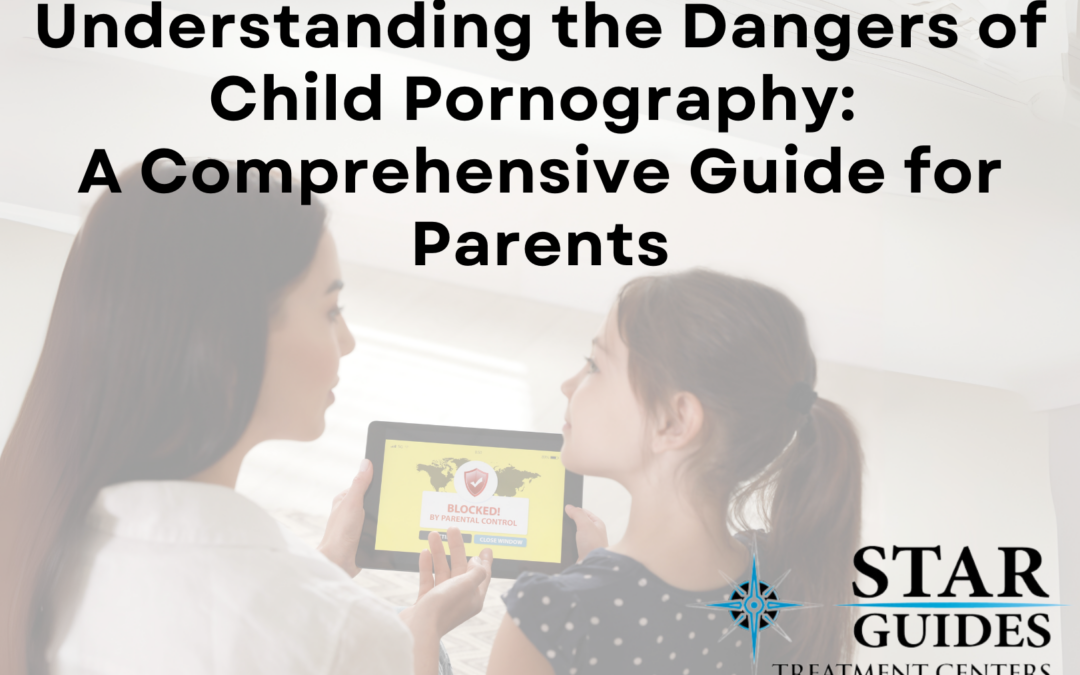Child pornography is a critical issue that inflicts serious harm on children and undermines the safety of our society. The lasting psychological and emotional trauma it causes for its victims, coupled with ongoing exploitation through online distribution, creates devastating effects on individuals and communities. Educating ourselves on these dangers and learning how to protect our youth is essential to fostering safer online spaces.
What Is Child Pornography?
Child pornography refers to any explicit material involving minors. This illegal content perpetuates trauma and exploitation, as children depicted in such images often experience long-term psychological harm. The Internet’s reach means that once images or videos are online, they can be circulated indefinitely, revictimizing the minors involved each time they are viewed or shared.
The Deep, Lasting Impact on Victims
The effects of child pornography on its victims are profound. Children who have been exploited in this way often struggle with self-esteem, find it difficult to trust others, and may face lifelong battles with anxiety, depression, or PTSD. Each instance of redistributing these images only amplifies the child’s suffering. Ongoing re-victimization makes it incredibly hard for them to heal, leading many to struggle with emotional isolation or fear of further exploitation.
Emotional and Psychological Effects
Survivors of child exploitation frequently encounter difficulties in forming healthy relationships or maintaining emotional stability. The experience often leaves lasting impressions that influence their outlook on trust, intimacy, and self-worth.
Why Is Child Pornography Especially Dangerous for Teens?
The accessibility of online content means teens are often exposed to mature or explicit material at younger ages. Exposure to such content can distort their perception of intimacy, leading to misconceptions about relationships and self-image. Young minds are especially vulnerable, and exposure to harmful material can influence their mental health and social behaviors, sometimes leading to compulsive behaviors or even addiction to explicit content.
The Role of Social Media and Technology
In an age of instant online access, the risk of exposure to inappropriate content is heightened. Young people are often just a click away from harmful material, so open and honest communication between parents and teens is more crucial than ever.
How Parents Can Protect Their Teens
To keep children safe, parents must be proactive. Here are the key steps:
- Open Communication: Talk with your teens about online dangers, encouraging them to share their experiences. Open dialogue helps children feel comfortable discussing any troubling encounters.
- Monitor Online Activity: Parental control tools and monitoring software can alert parents to potential risks without invading teens’ privacy. These tools can assist parents in guiding their teens toward safer digital habits.
- Education on Online Safety: Teach children about responsible Internet use. Emphasize that they should not share personal details online and should avoid engaging in behavior that makes them uncomfortable.
Specialized Support for Teens Struggling with Online Addiction
Adolescents who develop compulsive online behaviors often need specialized support to break free from addiction. Star Guides Treatment Centers provide dedicated programs for young people dealing with pornography and technology addictions. Their wilderness-based therapy is structured to address teens’ emotional struggles and help them re-establish healthy, balanced relationships with technology.
How Wilderness Therapy Works
Star Guides’ wilderness programs encourage teens to step away from digital distractions, allowing them to reconnect with themselves and their surroundings. These therapeutic activities promote resilience and a sense of accomplishment, helping adolescents build life skills in a supportive, distraction-free environment.
Why Seek Help for Technology and Pornography Addictions?
Many families are unaware of the potential for addiction until they see firsthand how excessive screen time or exposure to explicit material affects their teen’s mental and emotional well-being. Star Guides Treatment Centers recognize the challenges that families face and work with teens to overcome compulsive behaviors, often using a multi-faceted approach that includes education, therapy, and ongoing support.
Recognizing the Warning Signs of Addiction
Recognizing early signs of addiction in teens is crucial. Here are some red flags to watch for:
- Isolation: Spending excessive time alone, often online, and avoiding social or family interactions.
- Mood Swings: Noticeable changes in mood or increased irritability, especially when unable to access the internet.
- Decline in Academic Performance: Difficulty concentrating on schoolwork or a sudden drop in grades.
- Increased Secrecy: Avoiding questions about online activity or being overly defensive when asked.
If you notice these signs, consider contacting professionals like those at Star Guides to determine the best course of action.
Empowering Teens for a Safer, Healthier Future
Raising awareness about the dangers of child pornography and online addiction helps parents create a supportive environment for their teens. Parents can guide teens toward a healthier relationship with technology by staying informed, practicing open communication, and setting clear online boundaries.
If your family is struggling with the impact of technology or pornography addiction, it may be time to consider specialized support. Star Guides Treatment Centers offers tailored programs to help teens overcome these challenges and move toward a healthier future.
Protecting our young people from the dangers of child pornography and online addiction is a crucial step in ensuring a safer, more compassionate world for all.

